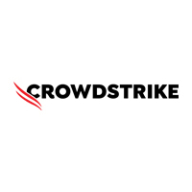

Splunk Enterprise Security and CrowdStrike Falcon are competing products in the cybersecurity category. CrowdStrike Falcon appears to have a feature advantage due to more advanced capabilities, whereas Splunk excels in data handling and integration.
Features: Splunk Enterprise Security provides capabilities such as threat intelligence, data aggregation, and anomaly detection which are ideal for comprehensive insights. CrowdStrike Falcon offers rapid threat detection, real-time response features, and endpoint security designed for those prioritizing immediate protection.
Room for Improvement: Splunk Enterprise Security could streamline complex setup processes and improve ease of integration across more diverse systems. Enhancing its case management system could further benefit users. CrowdStrike Falcon could benefit from better integration with existing SIEM solutions and expanded training opportunities for new users. Further enhancement in alert customization and reporting functionalities would benefit broader deployments.
Ease of Deployment and Customer Service: Splunk Enterprise Security's setup can be complex but offers significant data integration flexibility. CrowdStrike Falcon shines with a cloud-native deployment that allows efficient endpoint management and has responsive customer service, suiting environments requiring rapid deployment.
Pricing and ROI: Splunk Enterprise Security involves higher setup costs primarily due to its comprehensive capabilities, offering a robust long-term ROI through enhanced visibility and threat management. CrowdStrike Falcon is competitively priced with strong ROI, facilitated by fast implementation and effective threat prevention.
CrowdStrike Falcon saves time and offers good value for money, especially for enterprise companies, because it can stop breaches.
It's very easy to deploy without many IT admins, saving time.
The documentation for Splunk Enterprise Security is outstanding. It is well-organized and easy to access.
We couldn't calculate what would have been the cost if they had actually gotten compromised; however, they were in the process, so every investment was returned immediately.
On average, my SecOps team takes probably at least a quarter of the time, if not more, to remediate security incidents with Splunk Enterprise Security compared to our previous solution.
On a scale of one to ten, I would rate the technical support as a 10 because they resolve many issues for us.
The CrowdStrike team is very efficient; I would rate them ten out of ten.
They could improve by initiating calls for high-priority cases instead of just opening tickets.
We have paid for Splunk support, and we’re not on the free tier hoping for assistance; we are a significant customer and invest a lot in this service.
I have had nothing but good experiences with Splunk support, receiving timely and helpful replies.
We've had great customer success managers who have helped us navigate scaling from 600 gigs to 30 terabytes.
It has adequate coverage and is easy to deploy.
In terms of scalability, I find CrowdStrike to be stable, and I have not encountered any limitations with it.
There's no scalability limitation from CrowdStrike itself, as it just requires agent deployment.
We currently rely on disaster recovery and backup recovery, which takes time to recover, during which you're basically blind, so I'm pushing my leadership team to switch over to a clustering environment for constant availability.
It is one of the things that separates it from other tooling, and if not, it is the most scalable solution out there.
They struggle a bit with pure virtual environments, but in terms of how much they can handle, it is pretty good.
I have never seen instability in the CrowdStrike tool.
We are following N-1 versions across our environment, which is stable.
The biggest issue occurred when every computer worldwide experienced a blue screen.
They test it very thoroughly before release, and our customers have Splunk running for months without issues.
Splunk has been very reliable and very consistent.
We need more SMEs, and there is no mechanism to tell us about indexer or search head issues.
Simplifying the querying process, such as using double quote queries or directly obtaining logs based on IP addresses or usernames, would be beneficial.
Another concern is CrowdStrike's GUI. It changes annually, making it hard to work and find options.
Threat prevention should be their first priority.
Improving the infrastructure behind Splunk Enterprise Security is vital—enhanced cores, CPUs, and memory should be prioritized to support better processing power.
Splunk Enterprise Security is not something that automatically picks things; you have to set up use cases, update data models, and link the right use cases to the right data models for those detections to happen.
For any future enhancements or features, such as MLTK and SOAR platform integration, we need more visibility, training, and certification for the skilled professionals who are working.
It is expensive compared to SentinelOne, but as the market leader, it is worth it.
The licensing cost and setup costs are affordable.
The solution is a bit expensive.
I saw clients spend two million dollars a year just feeding data into the Splunk solution.
The platform requires significant financial investment and resources, making it expensive despite its comprehensive features.
I find it to be affordable, which is why every industry uses it.
I can investigate by accessing the customer's host based on the RTR environment and utilize host search to know details for the past seven days, including logins, processes, file installations, malicious processes, and network connections.
The real-time analytics aspect of CrowdStrike performs well because we get all logs in real-time, with no delay, allowing us to take action immediately.
Being an EDR solution, it helps us identify attacks in real-time.
This capability is useful for performance monitoring and issue identification.
I assess Splunk Enterprise Security's insider threat detection capabilities for helping to find unknown threats and anomalous user behavior as great.
Splunk Enterprise Security provides the foundation for unified threat detection, investigation, and response, enabling fast identification of critical issues.
| Product | Market Share (%) |
|---|---|
| Splunk Enterprise Security | 7.4% |
| CrowdStrike Falcon | 3.3% |
| Other | 89.3% |

| Company Size | Count |
|---|---|
| Small Business | 46 |
| Midsize Enterprise | 34 |
| Large Enterprise | 62 |
| Company Size | Count |
|---|---|
| Small Business | 109 |
| Midsize Enterprise | 50 |
| Large Enterprise | 263 |
CrowdStrike Falcon offers robust endpoint protection and threat detection, leveraging cloud-native architecture and AI-driven capabilities for advanced security. Its design ensures minimal system impact, making it a preferred choice for organizations seeking efficient protection solutions.
CrowdStrike Falcon provides comprehensive security features, including endpoint detection and response, real-time threat insights, and advanced AI-driven detection mechanisms. Its cloud-native architecture facilitates effortless scalability and seamless integration with cloud services, securing endpoints, servers, and roaming users. While Falcon delivers strong threat intelligence and automated detection, it faces challenges in operating system compatibility, reports require enhancements, and integration with some technologies is limited. High pricing and occasional false positives are noted areas for improvement, along with expanded support for older systems.
What are the key features of CrowdStrike Falcon?In industries requiring fortified cybersecurity measures, CrowdStrike Falcon is deployed for endpoint protection and incident response. It offers advanced threat defense and integrates well with cloud services, making it a suitable replacement for traditional antivirus solutions. For sectors engaging in forensic investigations and real-time malware defense, Falcon's capabilities align with their security demands, serving industries from healthcare to finance.
Splunk Enterprise Security delivers powerful log management, rapid searches, and intuitive dashboards, enhancing real-time analytics and security measures. Its advanced machine learning and wide system compatibility streamline threat detection and incident response across diverse IT environments.
Splunk Enterprise Security stands out in security operations with robust features like comprehensive threat intelligence and seamless data integration. Its real-time analytics and customizable queries enable proactive threat analysis and efficient incident response. Integration with multiple third-party feeds allows detailed threat correlation and streamlined data visualization. Users find the intuitive UI and broad compatibility support efficient threat detection while reducing false positives. Despite its strengths, areas such as visualization capabilities and integration processes with cloud environments need enhancement. Users face a high learning curve, and improvements in automation, AI, documentation, and training are desired to maximize its potential.
What Are the Key Features of Splunk Enterprise Security?In specific industries like finance and healthcare, Splunk Enterprise Security is instrumental for log aggregation, SIEM functionalities, and compliance monitoring. Companies leverage its capabilities for proactive threat analysis and response, ensuring comprehensive security monitoring and integration with various tools for heightened operational intelligence.
We monitor all Security Information and Event Management (SIEM) reviews to prevent fraudulent reviews and keep review quality high. We do not post reviews by company employees or direct competitors. We validate each review for authenticity via cross-reference with LinkedIn, and personal follow-up with the reviewer when necessary.